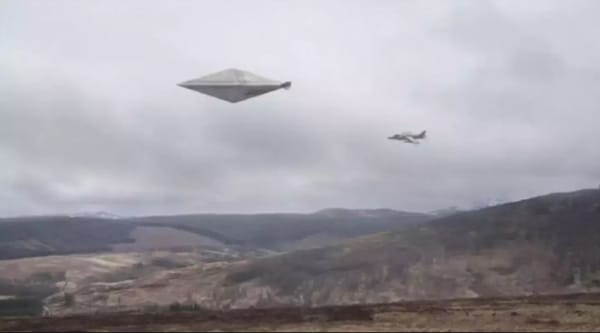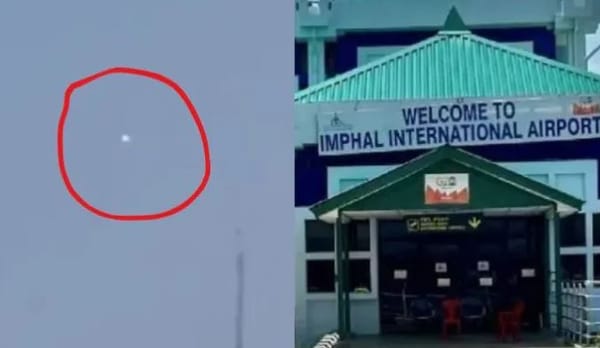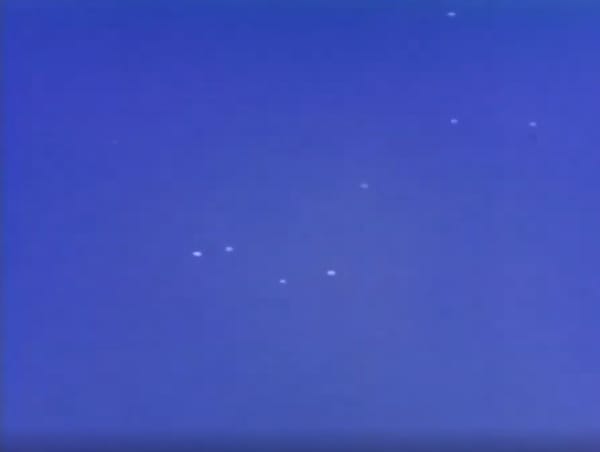The 1961 Betty and Barney Hill Abduction Case

Introduction
Overview of the Case
Betty and Barney Hill’s abduction story stands as one of the most seminal and widely publicized accounts of alien abduction in American history. On the night of September 19, 1961, the Hills, an interracial couple from Portsmouth, New Hampshire, encountered what they believed to be a UFO while returning home from a vacation in Canada. Their experience began with the sighting of a bright object in the sky that seemed to follow their car. This sighting escalated into a series of increasingly strange events, culminating in a period of lost time and vague, unsettling memories.
Over subsequent months, the couple began to experience intense anxiety and distressing dreams. Seeking answers, they underwent hypnosis with Dr. Benjamin Simon, a Boston-based psychiatrist, to recover their lost memories. Under hypnosis, both Betty and Barney recalled being taken aboard a spacecraft by alien beings who conducted physical examinations on them. Betty described the beings as having large eyes, small noses, and gray skin, which would later become a prototypical description of the "Greys" in UFO lore.
Significance
The Betty and Barney Hill abduction case holds a pivotal place in the annals of UFO history, shaping public and academic discourse on extraterrestrial encounters. This case was the first widely reported incident of alien abduction in the United States and introduced many themes that would become common in subsequent abduction narratives, such as missing time, hypnotic regression, and detailed descriptions of alien entities.
The Hill case significantly influenced public perception of UFOs and abductions, sparking both fascination and skepticism. It received extensive media coverage, including a book titled "The Interrupted Journey" by John G. Fuller and various television adaptations, which brought the concept of alien abduction into mainstream consciousness. Moreover, the case has been the subject of numerous scholarly analyses and debates, contributing to the ongoing discourse about the nature of such experiences and their implications for our understanding of human consciousness and the possibility of extraterrestrial life.
The Hills’ account also opened the door to serious consideration of psychological, cultural, and potentially extraterrestrial dimensions of abduction experiences. It encouraged other individuals to come forward with their own abduction stories, leading to a broader exploration of the phenomenon and its impact on those who experience it. Thus, the Betty and Barney Hill abduction case remains a cornerstone in UFO studies and continues to provoke curiosity and debate over six decades later.
The Incident
On the night of September 19, 1961, Betty and Barney Hill were driving back to their home in Portsmouth, New Hampshire, after a brief vacation in Canada. At around 10:30 p.m., as they traveled along U.S. Route 3 near Lancaster, New Hampshire, Betty noticed a bright point of light in the sky that appeared to be moving below the moon and Jupiter. Curious, she urged Barney to stop the car so they could get a better look. They pulled over, and Barney retrieved binoculars from the trunk to examine the object more closely.
Through the binoculars, Betty observed an unusual craft with multicolored lights that seemed to be rotating. Barney, initially skeptical, also looked through the binoculars and saw a strange, flying object that appeared to be an aircraft but moved in erratic patterns. As they continued to observe, the object seemed to follow their car, moving swiftly and silently through the night sky. Alarmed by its behavior, Barney hurried back to the car, and they resumed their journey, hoping to distance themselves from the mysterious craft.
As the Hills continued driving, the object descended and approached their vehicle. Barney eventually stopped the car again and stepped out to get a closer look with the binoculars. What he saw left him deeply unsettled: the craft was now much closer, revealing a large, disc-shaped structure with windows through which he could see figures moving about. The craft appeared to be about 60-80 feet long, with a flattened shape that hovered silently. It moved in a manner unlike any conventional aircraft, with smooth, rapid shifts in direction and hovering capabilities that defied explanation.
The Abduction Experience
Feeling a surge of fear and an inexplicable compulsion to stay put, Barney quickly returned to the car. The couple then heard a series of beeping or buzzing sounds that seemed to come from the craft, and they felt a tingling sensation pass through their bodies. As they continued driving, the buzzing sounds began again, and they found themselves in a dazed state, traveling down the road without any clear memory of the past few minutes. The next thing they knew, they were approximately 35 miles south of where they had initially seen the craft, yet had no recollection of how they had traveled that distance.
Memory Gaps and Missing Time
Once home, Betty and Barney realized that they had arrived much later than expected, suggesting that they had lost about two hours of time. Over the following days, both experienced persistent anxiety and disturbing dreams. Betty began having vivid, recurring nightmares about being taken aboard the craft and subjected to medical examinations. Barney, though more reluctant to discuss the event, also felt a deep, unshakable sense of dread and confusion about the missing time.
Seeking answers, they contacted various organizations and eventually underwent hypnosis with Dr. Benjamin Simon. Under hypnosis, both Betty and Barney recounted similar experiences of being taken aboard the craft by small, humanoid beings who performed various procedures on them. These detailed, hypnotically retrieved memories would later become the foundation of their abduction narrative, marking the beginning of one of the most famous and influential alien abduction cases in history.
Eyewitness Accounts
Betty and Barney Hill’s descriptions of their experience provide a vivid account of their encounter. Betty recalled a profound sense of fear mixed with fascination as she observed the strange craft’s erratic movements. Through the binoculars, she saw multicolored lights and a rotating, disc-shaped object that seemed to follow their car. Barney, initially dismissive, became deeply troubled after seeing humanoid figures through the craft’s windows. His fear escalated when he realized the object was behaving in ways that defied known aviation capabilities.
Both Betty and Barney experienced a series of beeping or buzzing sounds that triggered a trance-like state and subsequent memory gaps. Under hypnosis, they recounted being taken aboard the craft, undergoing medical examinations, and interacting with extraterrestrial beings. Betty described the beings as having large eyes, small noses, and gray skin, while Barney's recollections were more fragmented and fear-laden.
Their niece Kathleen, an ardent supporter of their story, played a significant role in bringing attention to their case. She believed their accounts and helped document their experiences, contributing to the case’s notoriety. Family members and friends exhibited a mix of skepticism and belief, which further fueled public and media interest.
Additional reports from the same night added a layer of corroboration to their story. Other witnesses in the region reported seeing strange lights and unidentified flying objects, lending some credibility to the Hills' account. These additional observations, though not always consistent, provided a broader context for the events of that night, making the Hills' encounter part of a larger tapestry of UFO sightings.
Theories and Explanations
Initial explanations for the Hill's abduction story varied widely, reflecting the contentious nature of UFO phenomena. Conventional theories suggested that the couple might have misidentified a conventional aircraft or some form of atmospheric phenomenon. Skeptics argued that the Hills had likely seen a weather balloon, a bright planet, or a military aircraft that they misinterpreted due to stress and fatigue.
Psychological and sociological perspectives offered another layer of analysis. Some researchers proposed that the Hills' experiences were influenced by the psychological stressors of their interracial marriage during a period of racial tension in the United States. This stress could have manifested in a shared hallucination or a folie à deux (shared psychosis). Others suggested that cultural influences, including the popular science fiction narratives of the time, shaped their recollections and led them to interpret their experience as an alien abduction.
The UFO hypothesis, which posits extraterrestrial involvement, remains a significant aspect of the Hills' story. Proponents of this theory argue that the detailed consistency of the Hills' accounts, along with the physical and psychological evidence, supports the idea of an actual extraterrestrial encounter. Under hypnosis, both Betty and Barney provided detailed descriptions of the beings, the craft, and the examinations they underwent. Betty's description of a star map shown to her by one of the beings was later analyzed and found to bear a striking resemblance to the Zeta Reticuli star system, adding weight to her claims.
Analysis of the evidence includes both physical and testimonial elements. The Hills' car showed unexplained magnetic anomalies, and Betty's dress was torn and had a pink powder on it that defied explanation. Their emotional and psychological state, documented through psychiatric evaluations and hypnotic regression sessions conducted by Dr. Benjamin Simon, revealed consistent and compelling accounts of their experiences, despite minor variations. While hypnosis has its critics, the depth and detail of the Hills' recollections under regression are often cited as key evidence supporting the extraterrestrial hypothesis.
Official Responses and Investigations
The official responses to Betty and Barney Hill's abduction claims were mixed, reflecting both skepticism and intrigue. Initially, local authorities, including the police and Air Force personnel from nearby Pease Air Force Base, documented the Hills' report but remained cautious about endorsing their story. The incident was logged in Project Blue Book, the Air Force's official investigation into UFO sightings, but was initially classified as a simple case of misidentified celestial objects or aircraft.
Statements from officials varied. Major Paul W. Henderson, who was tasked with investigating the case for Project Blue Book, concluded that the Hills had likely misidentified the planet Jupiter. However, Dr. J. Allen Hynek, a scientific consultant to Project Blue Book and an astronomer at Northwestern University, later expressed a more open-minded view, suggesting that the case deserved further investigation due to the credible nature of the witnesses.
Investigations into the Hills' claims included a series of interviews and hypnotic regression sessions conducted by Dr. Benjamin Simon, a Boston psychiatrist renowned for his work with World War II veterans suffering from post-traumatic stress disorder. Simon's sessions with the Hills revealed consistent, detailed accounts of their abduction experience, although he himself was skeptical of the extraterrestrial hypothesis, attributing the memories to a dream-like state or psychological phenomenon.
Academic interest in the case grew, with several researchers and psychologists examining the Hills' testimony and the broader social and psychological implications of their experience. Despite this interest, allegations of cover-ups and suppression of information persisted. Some UFO researchers and conspiracy theorists argued that the Air Force and other government entities had deliberately downplayed the Hills' case to avoid public panic and to conceal their own investigations into UFO phenomena.
Evidence of alleged cover-ups is circumstantial but compelling to some. Critics point to the Air Force's initial dismissive stance and the apparent lack of thorough investigation as indicative of a broader effort to suppress the truth. Additionally, discrepancies in official reports and the subsequent disappearance of some related documents have fueled suspicions that key details of the Hills' experience were deliberately obscured.
Overall, the official response to Betty and Barney Hill's abduction story illustrates the complex interplay between skepticism and belief, public interest, and governmental control in the field of UFO investigations.
Impact and Legacy
The abduction of Betty and Barney Hill has left an indelible mark on both public consciousness and the broader discourse surrounding UFOs and extraterrestrial encounters. As one of the first widely publicized cases of alien abduction, it has had a profound influence on popular culture, media, and ongoing research into the phenomenon.
Public and Media Reaction
The Hill case has significantly shaped the narrative of alien abduction in popular culture. It introduced many elements now common in UFO lore, such as missing time, hypnotic regression to recover suppressed memories, and detailed descriptions of extraterrestrial beings. The case has inspired numerous books, films, and television programs, including the 1975 TV movie "The UFO Incident," which dramatized the Hills' experience and brought their story to an even wider audience. The Hills' account helped to establish a template for subsequent abduction reports, influencing how both the public and UFO researchers perceive such encounters.
Media Coverage:
The media played a crucial role in bringing the Hills' story to the public's attention. Initial coverage by local newspapers quickly escalated to national and even international interest. Articles and television segments often sensationalized the events, adding to the intrigue and controversy. The intense media scrutiny had a significant impact on the Hills' lives, subjecting them to public scrutiny and skepticism but also earning them a place in the annals of UFO history. The continued media interest in their story has ensured that it remains a focal point in discussions about alien abductions.
Conclusion
The case of Betty and Barney Hill remains one of the most compelling and debated stories of alleged alien abduction. On September 19, 1961, while driving home from a vacation in Canada, the Hills encountered an unusual object in the night sky. Their observations of the craft's behavior, along with the subsequent feeling of being followed and ultimately abducted, introduced many to the concept of alien abduction. This narrative was bolstered by detailed descriptions of the craft and its occupants, as well as mysterious gaps in their memories and a profound sense of missing time.
The significance of the Hill case extends beyond its immediate impact. It has played a crucial role in shaping UFO lore and has sparked extensive public and academic discourse. The story was one of the first to gain widespread media attention, making it a touchstone for future reports of similar encounters. The case's influence is evident in its portrayal in various media, the academic and governmental investigations it prompted, and the ongoing research that continues to explore its many facets.
Reflecting on the case's legacy, it is clear that the mystery surrounding the Hills' experience endures. Their story has had a lasting impact on the field of UFO research, prompting both support for the extraterrestrial hypothesis and skepticism rooted in psychological and sociological theories. The Hill case remains a cultural landmark, influencing not only how UFO encounters are perceived but also how such experiences are reported and investigated.
The enduring fascination with the Hill abduction speaks to a broader human curiosity about the unknown and our place in the universe. Whether viewed as a genuine extraterrestrial encounter, a psychological phenomenon, or a culturally influenced event, the case of Betty and Barney Hill continues to captivate and challenge researchers, skeptics, and the public alike.



